A look at the history of Coal Harbour – whaling and war
My niece and I went for a wander after visiting a 1944 DC-3 wreck near Port Hardy, and ended up discovering more World War II history at Coal Harbour.
The first place that Bobbie wanted me to see, for future reference when looking for a campground, was the Quatse River Regional Park & Campground on the Coal Harbour Road. It’s lovely.
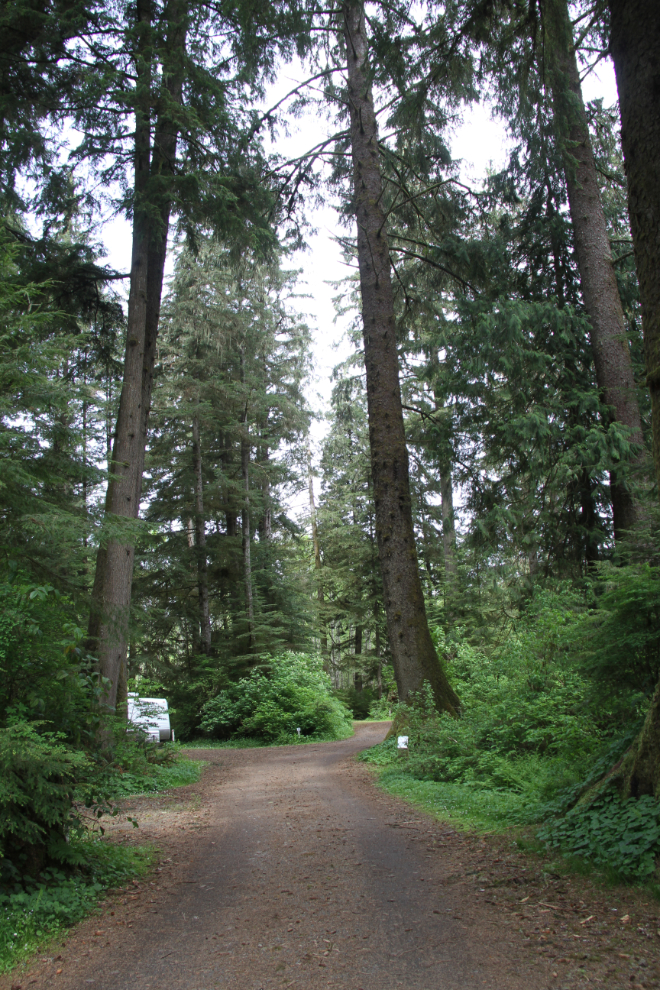
The sites are large, and although in heavy forest, it’s not as dark as the Forest Campground at Telegraph Cove. The attendant when we pulled in was friendly when Bobbie said we were just there for a look around, and when asked about it, told us that the whaling museum in Coal Harbour wasn’t open.
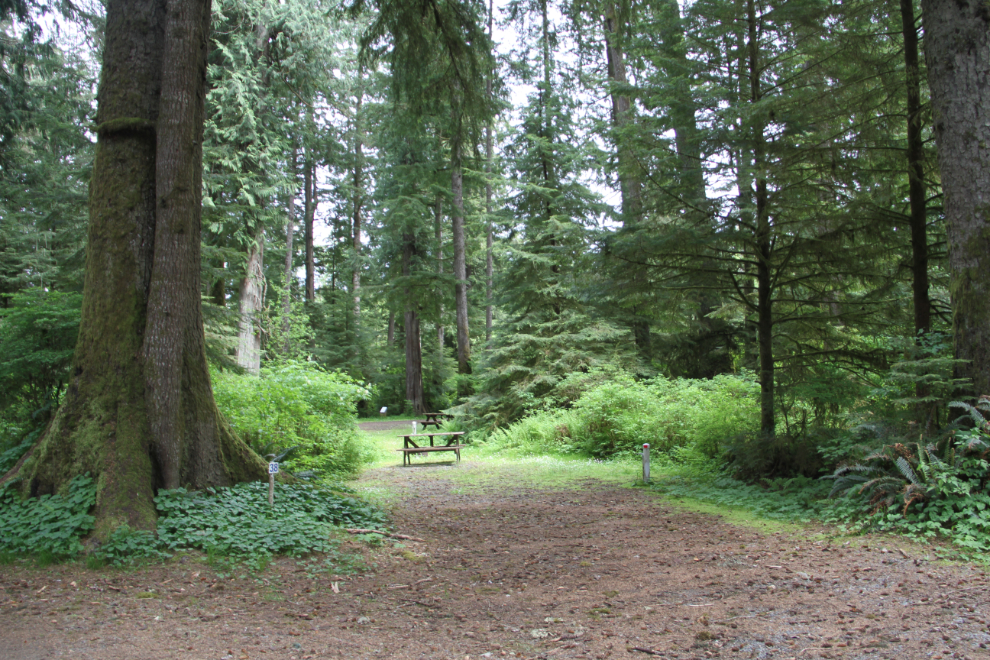
Firewood, sani-dump, water, garbage and recycling containers are all in one convenient and clean spot. Yes, we’ll definitely consider a stay here on our return trip some day.
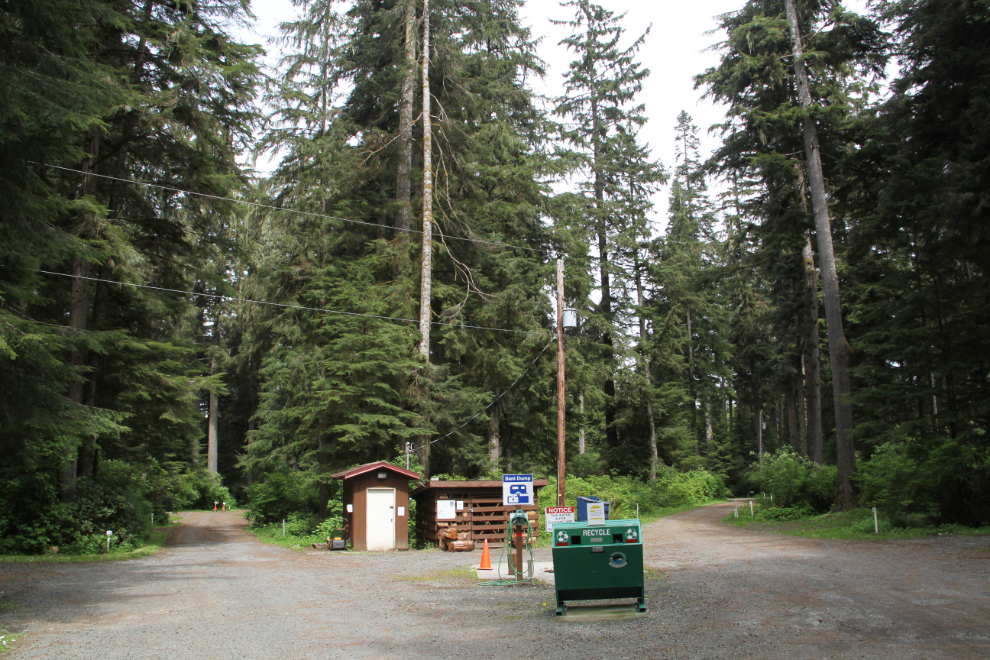
As we turned out of the campground, possible headed for Port Alce, I spotted this sign. WHOA! Off to Coal Harbour we went 🙂
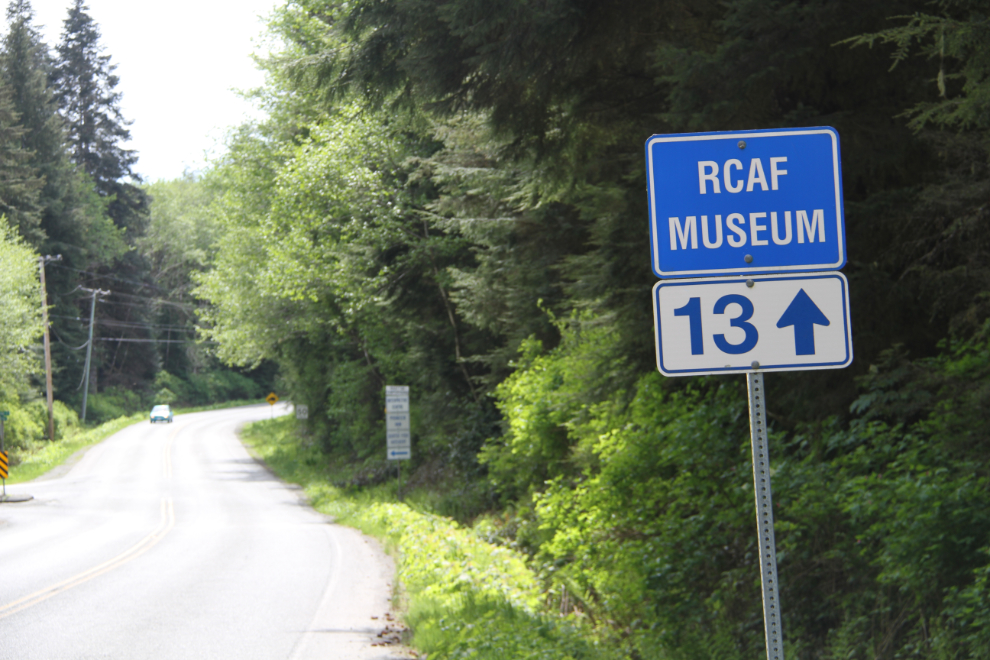
A couple more “Museum” signs (without the “RCAF”) led us to this obviously WWII RCAF hangar, but no further.
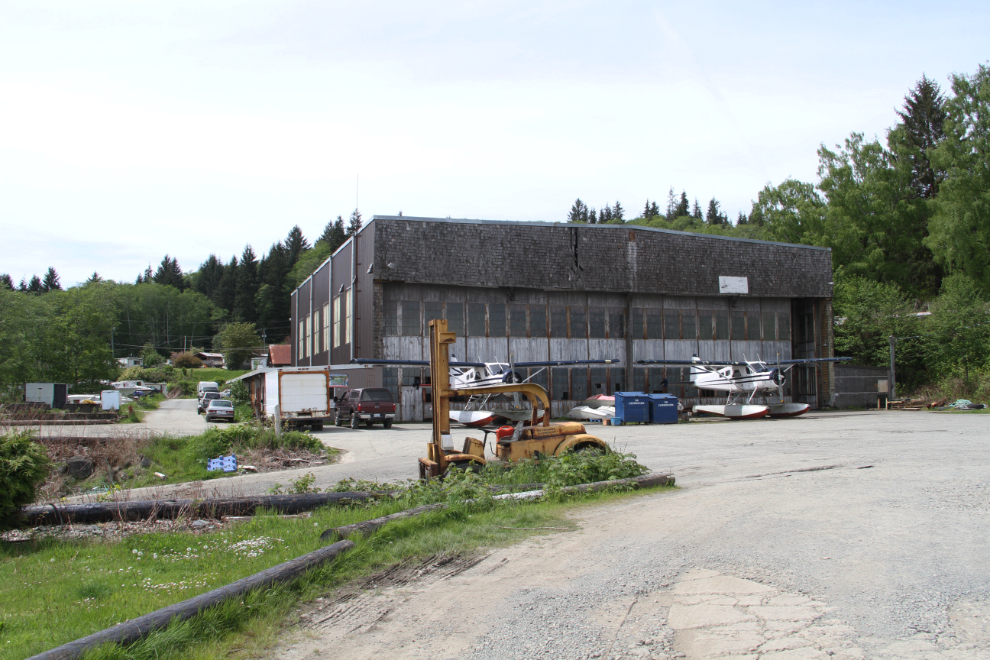
This memorial site at the spot where I took the above photo from includes a whale harpoon cannon and 2 memorial plaques for plane crashes that happened in the area. RCAF Stranraer 951 was lost at sea with her crew of 8 on August 23, 1942, and Canso 11043 crashed on July 31, 1945, with 1 fatality and 13 survivors.
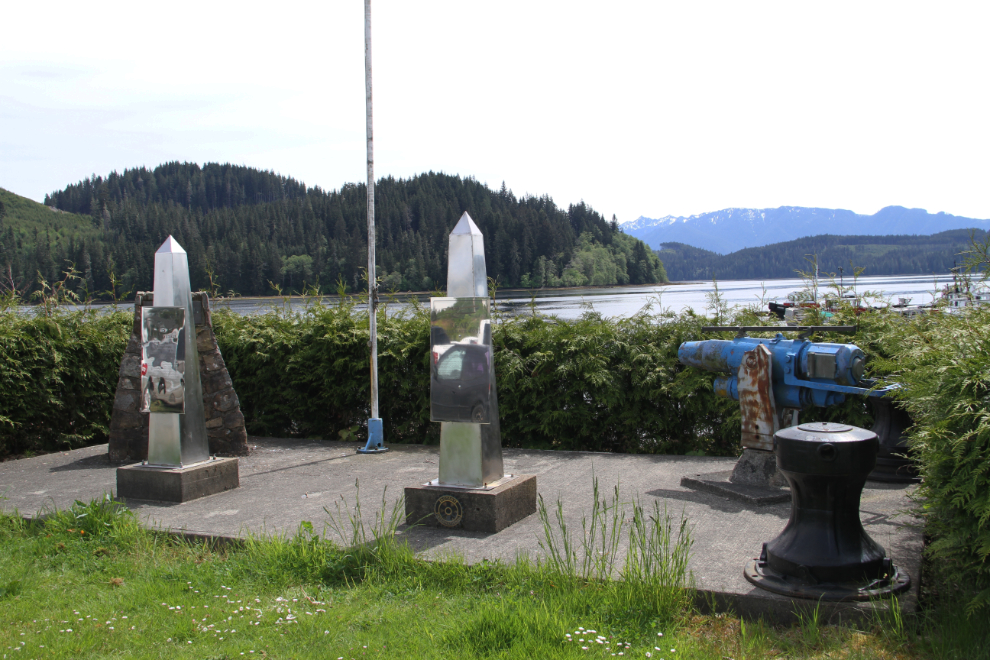
The first hangar door that I looked into didn’t look at all visitor-friendly, so I checked out the 3 aircraft sitting outside. There were 2 de Havilland Beavers, and Turbo Beaver C-FOES. Once I was able to check their registrations, I found that all 3 are owned by Coal Harbour based operator Air Cab.

When I looked into the other large hangar door, a very friendly elderly man who was clearly working on something invited me in. “Take all the pictures you want.” And he told me where the museum was, through a door in the far corner.
There were some fine pieces in the hangar itself, including this lovely boat that I think the man said was built in 1927.
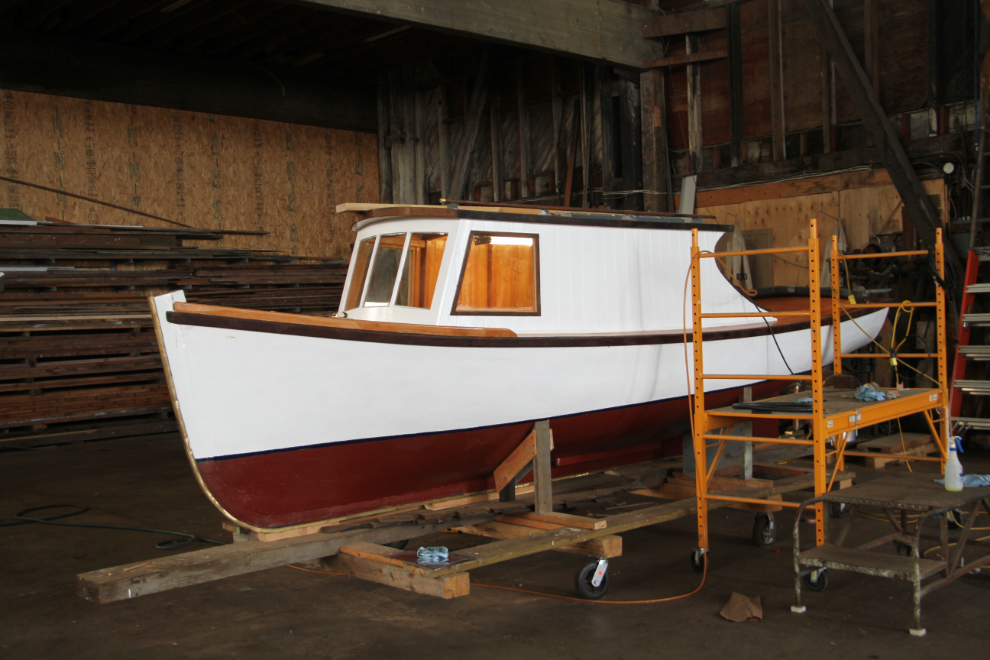
Now that’s a labour of love. Beautiful craftsmanship, both in the construction and the restoration.
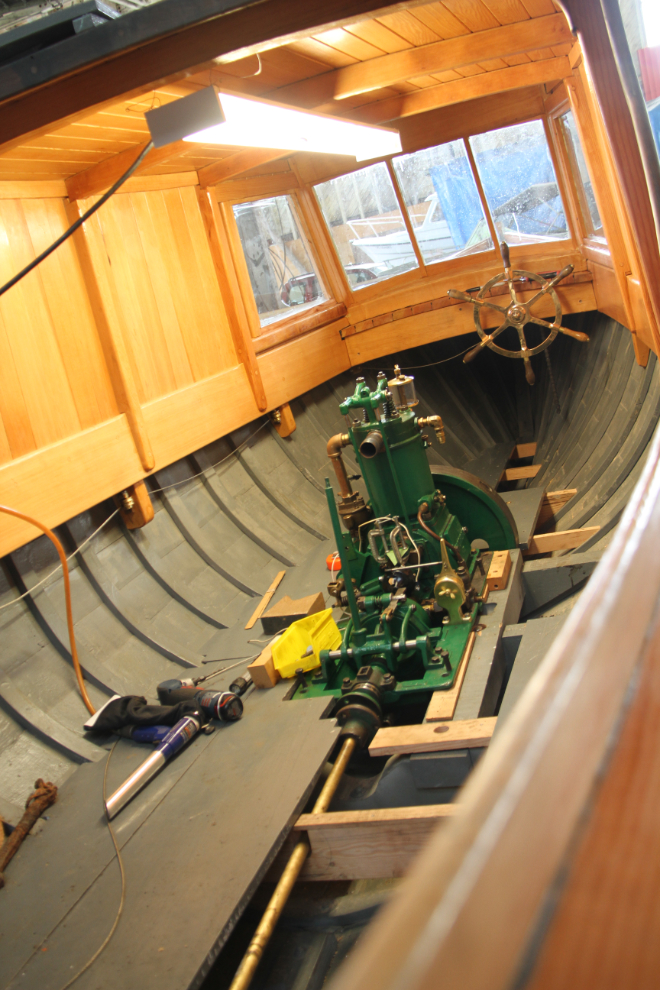
The museum has a rather haphazard layout and little interpretation, but there are some wonderful items, including a wide range of memorabilia from Coal Harbour’s days as an RCAF flying boat base (1940-1945).

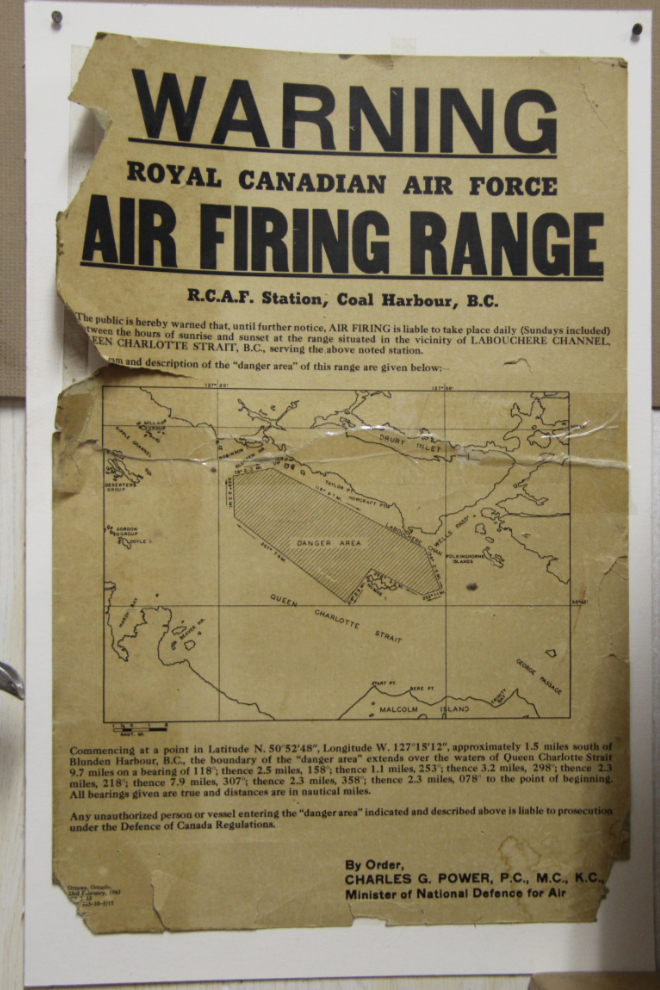
The pride of the collection is probably this beautifully-restored Ford fire engine.
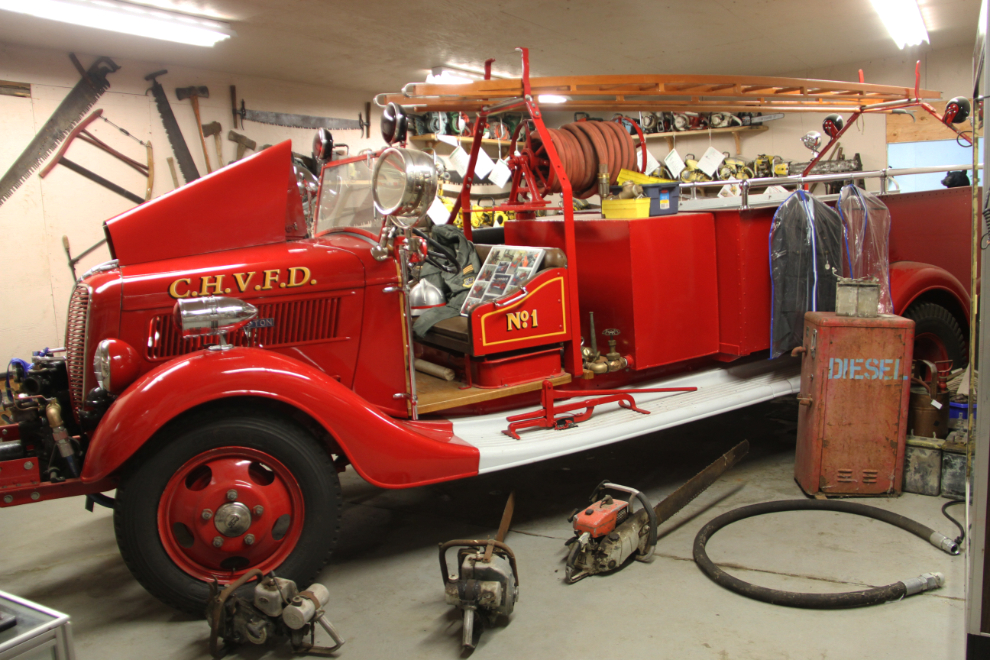
The collection of chain saws is very interesting. It would take a very powerful man to handle some of them, and some required 2 men to operate.
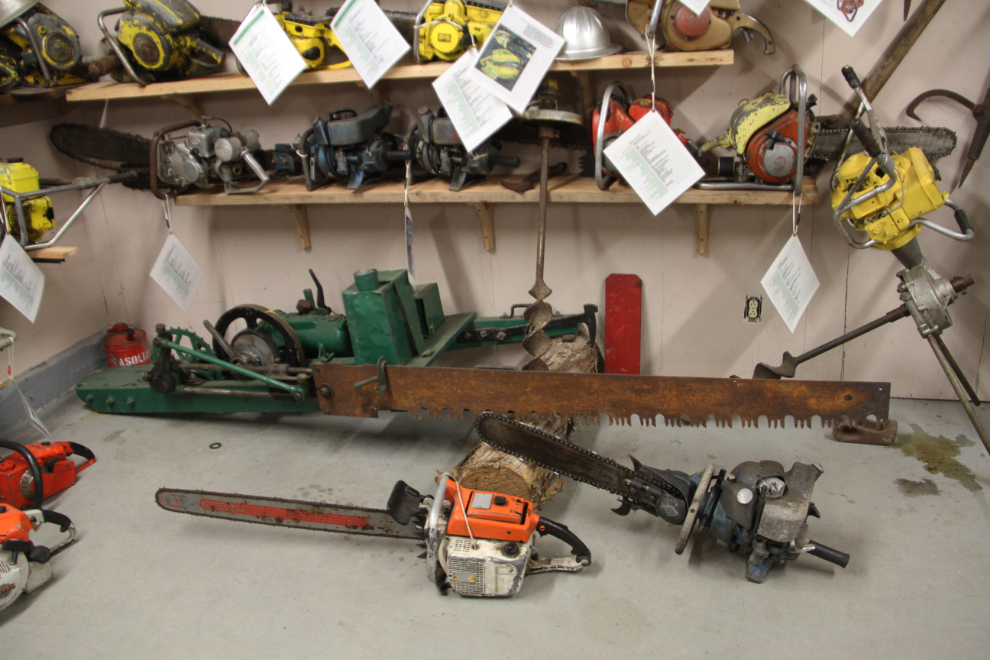
Coal Harbour was the site of Canada’s last whaling station. This right whale was killed here in 1951. Out in the hangar are the jawbones of a blue whale, apparently the largest in the world.
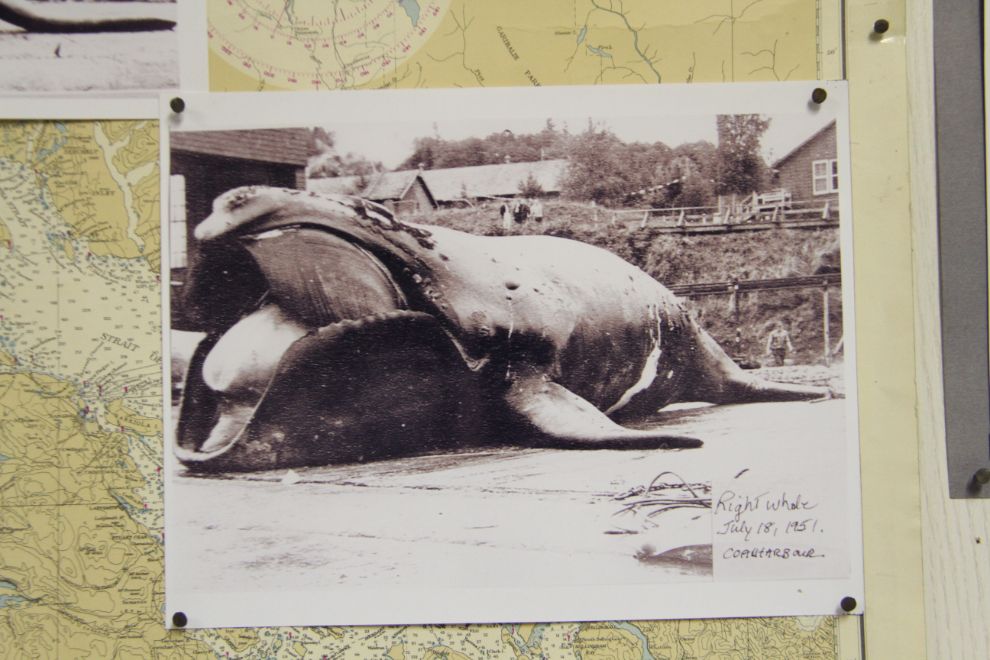
RCAF, whaling, and logging materials mingle.
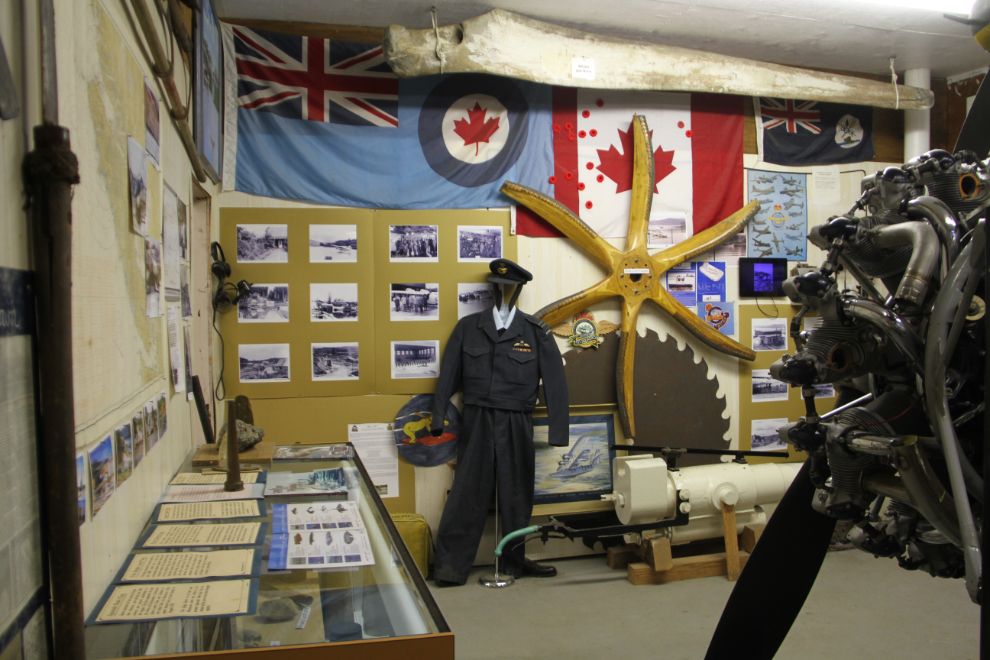
Another whaling corner, with whale-meat boxes, flensing knives, and other items.
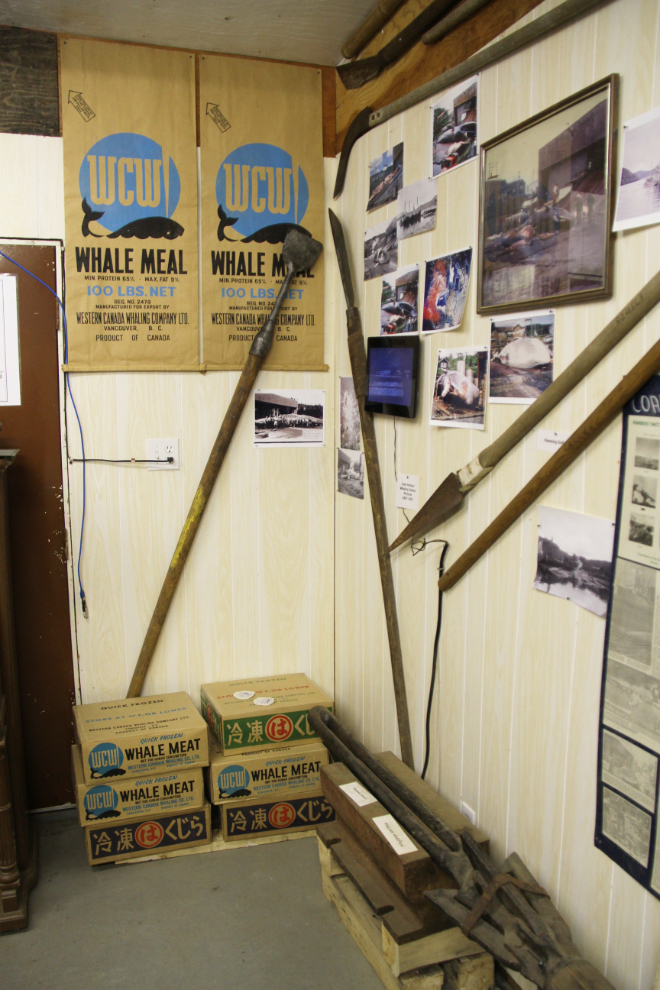
“Thar she blows – man the harpoon!!”
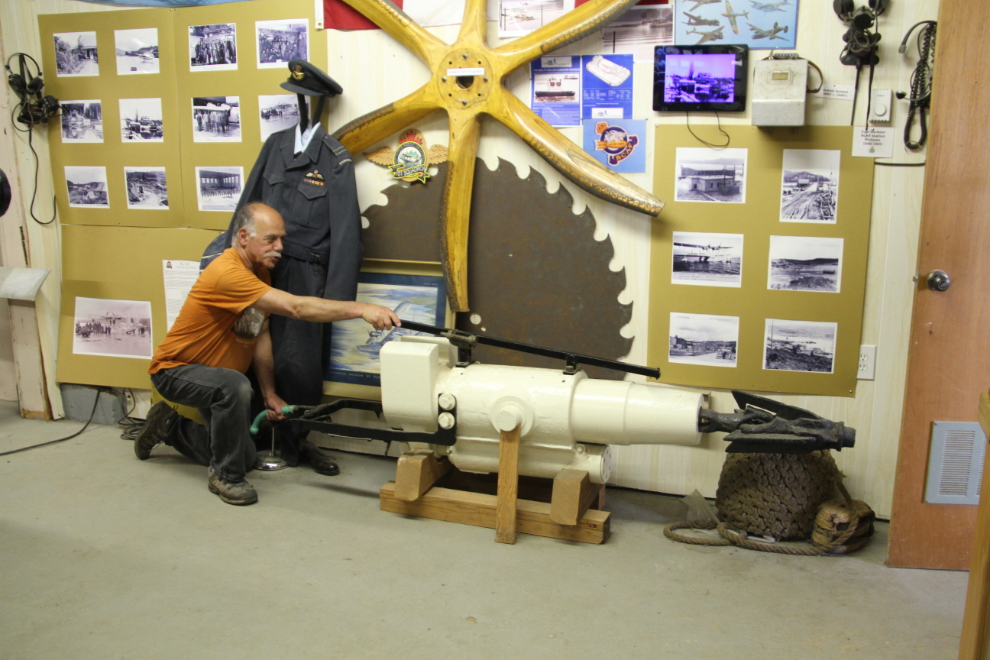
We only spent about 20 minutes in the museum, but we weren’t finished with Coal Harbour yet. It’s an extremely scenic setting.

Bobbie wanted to show me a “bunker” she’d found on a pervious visit, but on the way up the hill to it, we passed another RCAF building. Except for the double doors in front, its design and location suggested the commanding officer’s quarters.
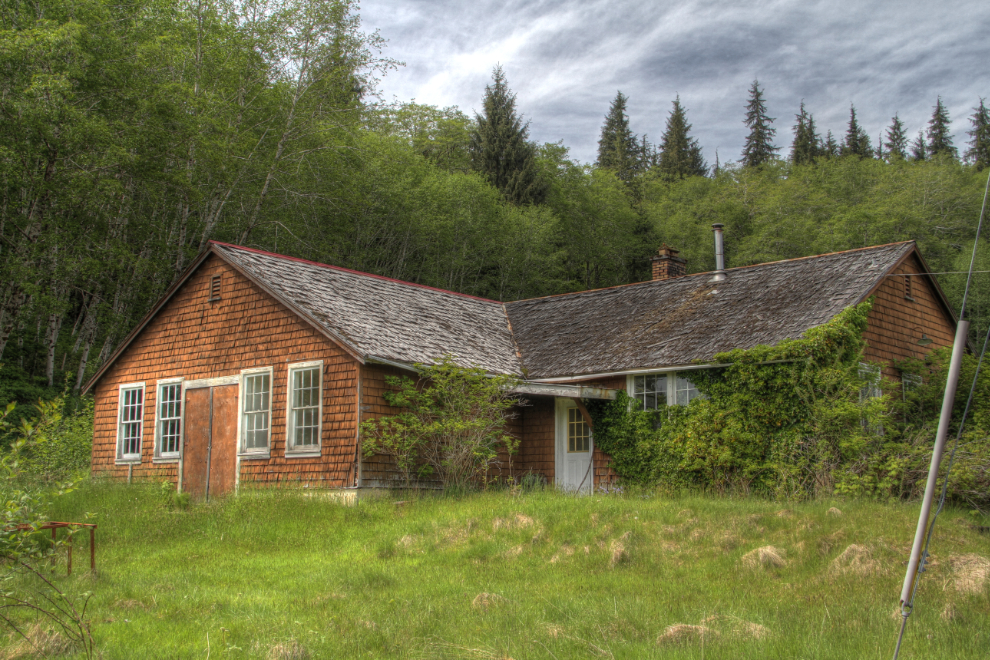
My first thought was that the bunker was an ammunition bunker.
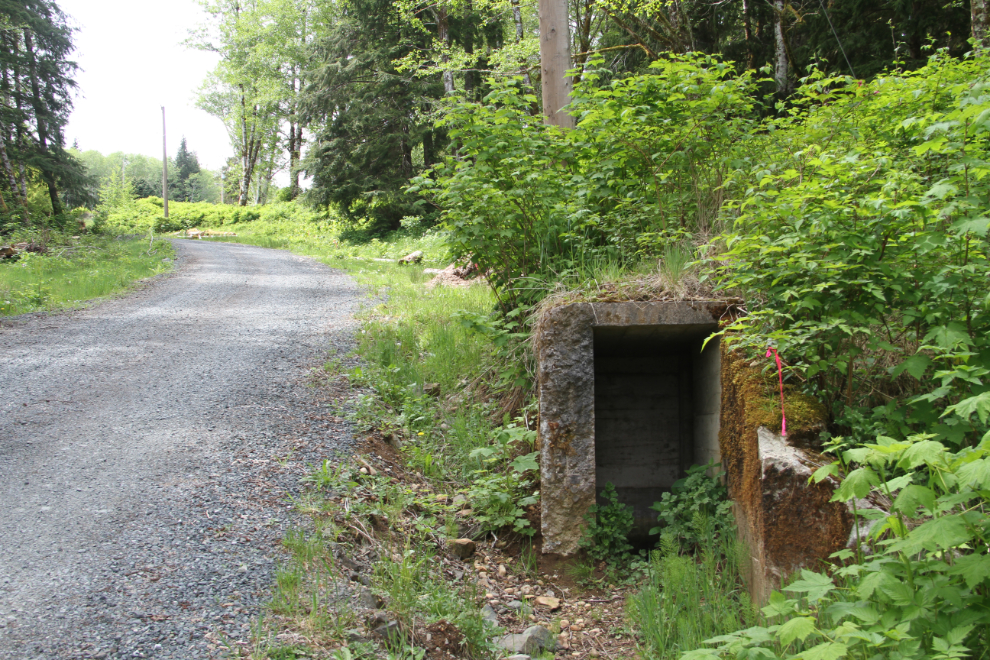
Then we went inside. A World War II RCAF bomb shelter!! How cool is that?!
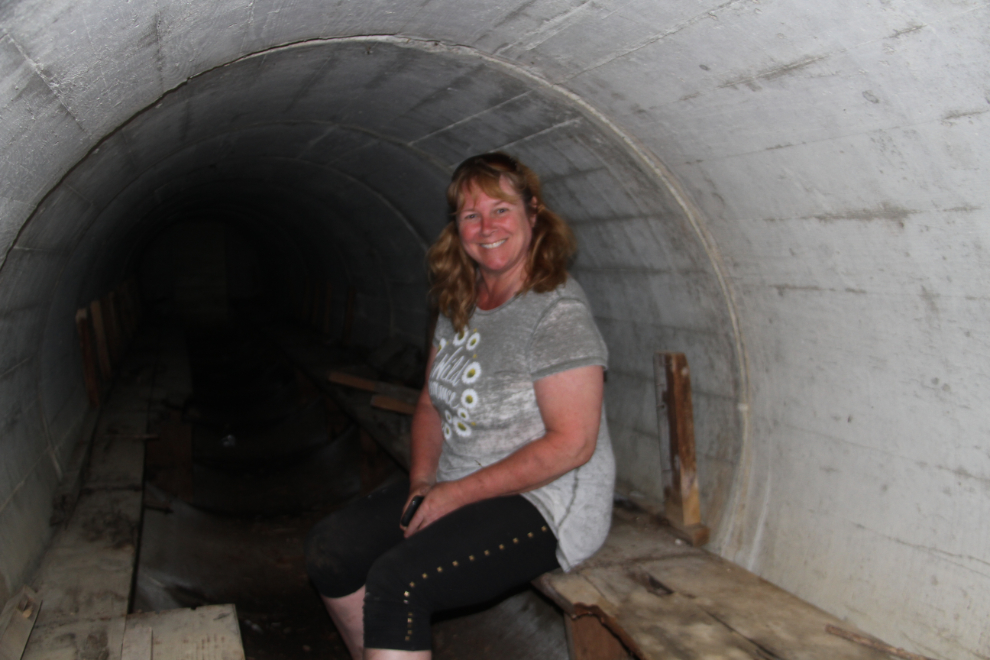
The RCAF barracks is in rough condition, but from a calendar on a wall inside, it may have been lived in until 2002. Rats and mould are now the primary tenants – the damage and smell were awful, and my throat burned for a long time after we left.
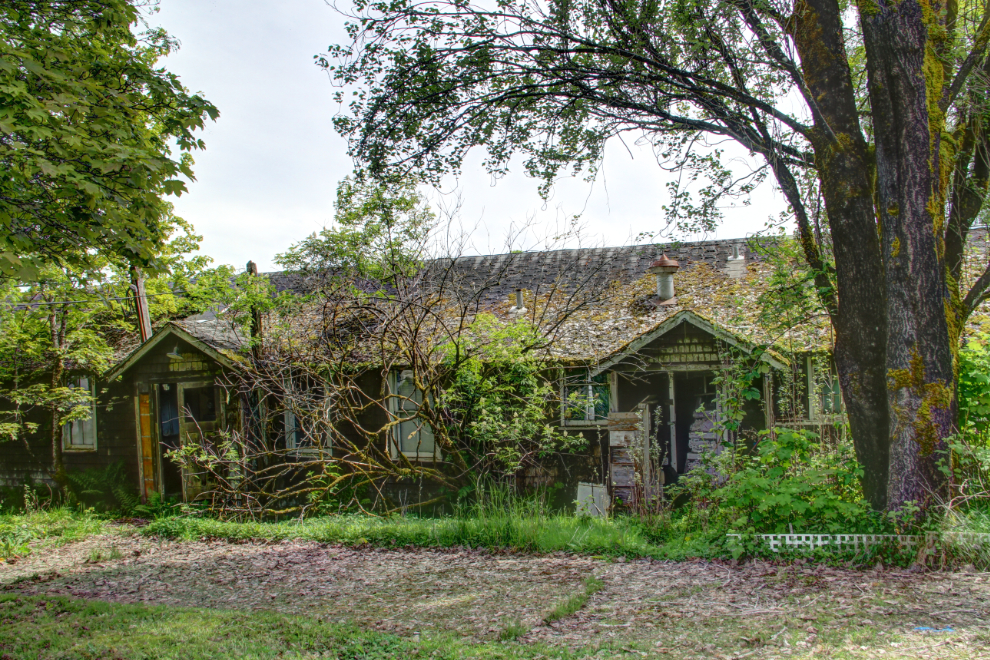
A creepy little wind chime hanging in one of the barracks rooms.
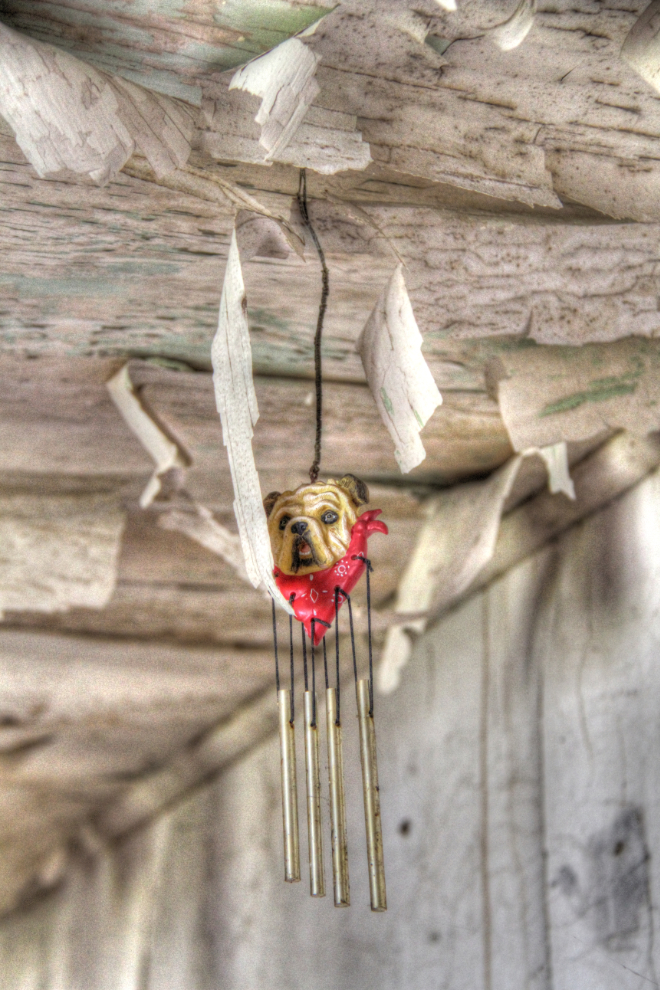
And finally, the RCAF garage. So here literally in the middle of nowhere, we have most components of a World War II RCAF Air Station still virtually intact, and unrecognized.
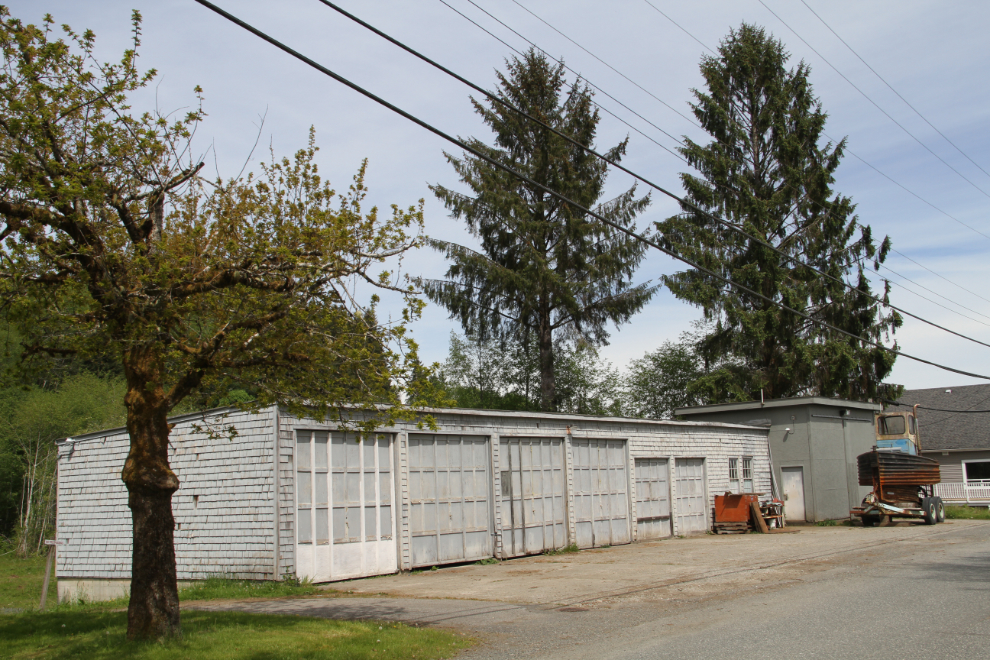
We returned to the RV park, and Cathy and I followed Bobbie back to Port McNeill for another fish-feast. We ended the day with plans to go as far north on the Island as we could get the next day – San Josef Bay?
